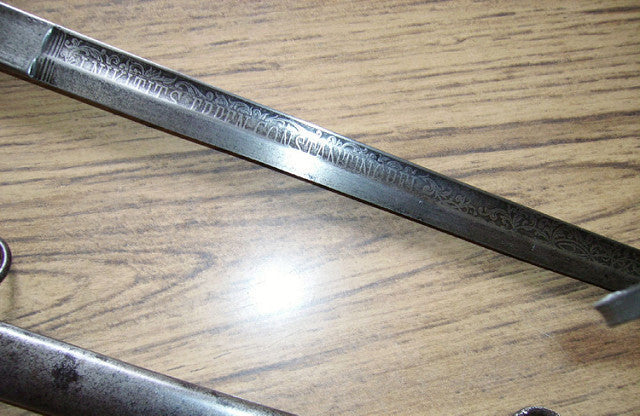Your Cart is Empty


Differential heat treatment, also known as selective heat treatment or local heat treatment, is a technique in metallurgy and swordmaking that involves hardening and softening different areas of metal by creating differences in hardness. In addition to the use of high-carbon steel, differential heat treatment is one of the reasons why traditional Japanese swords are superior to swords produced in other reasons.
The Basics of Differential Heat Treatment
The goal of differential heat treatment is to make one side of a sword exceptionally strong, while allowing the opposite side to remain somewhat flexible. Not all swords need differential heat treatment. In fact, some swords -- especially double-edged swords -- may suffer from this technique. The Japanese katana and other single-edged, curved-blade swords, however, will most certainly benefit from differential heat treatment.
When creating a traditional Japanese katana, the swordsmith may fold the metal a dozen or more times. This allows for a strong inner core with a somewhat weak outer core. Next, however, the swordsmith covers the blade in clay, applying a thin layer to the cutting edge and a thicker layer to the opposite layer (the spine). Once the swordsmith has applied the clay, he heats the sword and quenches it in water or oil.
Because of the difference in clay -- the cutting edge has a thinner layer -- the cutting edge cools more quickly than the opposite edge. The end result in a strong cutting edge that can withstand serious blows, while the rest of the blade remains flexible and able to bend.
Differential Hardening vs Tempering
Differential heat treatment is typically performed in one of two ways: differential hardening or differential tempering. With differential hardening, the metal is evenly heated and then cooled at different rates, which turns part of the metal into martensite while the rest becomes a softer pearlite.
Differential tempering, on the other hand, involves heating the metal and then quenching the entire metal, which turns it all into martensite. Specific parts of the metal is then heated at a significantly lower temperature to soften the respective areas.
Importance of Water Temperature
Quenching the sword with the right temperature water is critical in differential hardening. If the water is too cold, it the sword will cool too quickly, which can affect the strength of the finished product. If the water is too warm, it will cool more slowly (or not at all), which can also affect its strength. The "sweet spot" for a sword's hardness is usually around HRc58–60 (Rockwell Hardness).
Photo credit: Wheel Cosmic